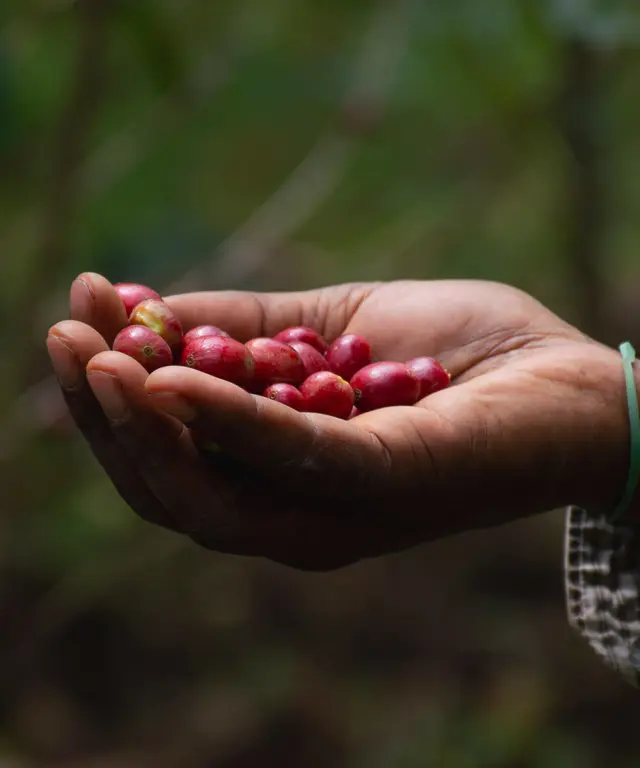How to Keep Coffee Fresh: A Practical Guide for TopBrewer Customers
For many of our professional partners, whether you're managing an office setup, a corporate space, or a hotel environment, coffee quality isn’t just about flavour; it’s also about consistency, shelf life, and reliability. With logistics, storage, and rotating staff, you need a product that holds up over time without requiring constant oversight.
That’s where our roasting and packaging systems come in. At Amokka®, we’ve developed an approach to delivering speciality-grade coffee for your TopBrewer that not only tastes exceptional but remains stable for weeks—or even months—after roasting without the use of additives or shortcuts.

Immediately after roasting, the beans are packed in triple-layer valve bags.
Coffee Storage Tips for Cafés and Offices
To make the most of your coffee, we recommend the following:
- Follow a first-in, first-out system. Use the oldest roast dates first.
- Order smaller batches more frequently, if possible, to ensure you’re always working with relatively fresh stock.
- Store unopened bags in a cool, dark place, away from ovens or warm equipment.
- Keep opened bags sealed and airtight, we recommend rolling them tightly and securing them with a rubber band.
- Avoid leaving beans in hoppers over the weekend, as exposure to light, air, and ambient heat accelerates staling.
Even with excellent packaging, the ageing process speeds up once a bag is opened. For TopBrewer systems, which often sit idle overnight or on weekends, good storage habits make a noticeable difference. We recommend using opened bags within 1–2 weeks for optimal results.

Be careful not to overfill right before a weekend.

Coffee Shelf Life & Resting Time – Dispelling the Myth of "Fresh Roasted Coffee"
We recommend using our coffee within 6 months of roasting for best results. This ensures a vibrant flavour profile, especially when paired with consistent brewing systems like the TopBrewer. However, this is but a conservative guideline, many of our partners find that the coffee holds up beautifully even 6 - 12 months post-roast, especially when stored properly.
All freshly roasted coffee undergoes a degassing phase, during which CO₂ is released from the beans. If brewed too early, especially lighter roasts intended for espresso, it can lead to inconsistent extractions, unstable crema, and underdeveloped flavours. These issues are particularly apparent within the first- week post-roasting. After this initial period, the coffee becomes more stable and consistent.
How Freshness Affects Brewing Equipment Performance
When coffee is too fresh, it can behave unpredictably in your equipment. Crema may foam excessively, espresso shots can become inconsistent, and grind settings might need frequent adjustment. By allowing lighter roasts adequate resting time and storing all coffee properly, you enhance consistency and make your equipment easier to dial in. That means fewer errors, smoother operation, and better coffee for everyone.

All Amokka® coffee is roasted on IMF hot air roasters.
The coffee is packaged right after roasting to ensure freshness.

Our Roasting & Packaging Method: Freshness Without Additives
All our coffees are roasted and packed in-house at our roastery in Kokkedal. We never store roasted coffee, as everything goes straight from the roaster to the packing line. The system is designed so that beans are cooled, destoned, and transferred directly into bags without delay. This means less handling, reduced exposure to air, and minimal oxidation.
We roast using a method called pre-batch blending, where the components of a blend are roasted together in a single, unified batch. This ensures that the beans degas at the same rate and that the flavour remains consistent over time. It also prevents the common issue where one part of a blend fades faster than another, which is a particular concern for espresso brewing.
Immediately after roasting, the beans are packed in triple-layer valve bags. These bags are designed to keep air and moisture out while allowing natural CO₂ from the coffee to escape through a one-way valve. We don’t flush with nitrogen — there’s simply no need. The CO₂ released by the beans themselves quickly fills the bag, displacing oxygen and creating a protective environment.
Our bags contain no aluminium, which makes them more recyclable and environmentally friendly. But that choice doesn’t compromise performance. The multilayer laminate acts as an excellent oxygen barrier, and with careful sealing, the coffee stays fresh far longer than you might expect.

Quality control in the roastery
Read more about Amokka® Coffee
(2)

